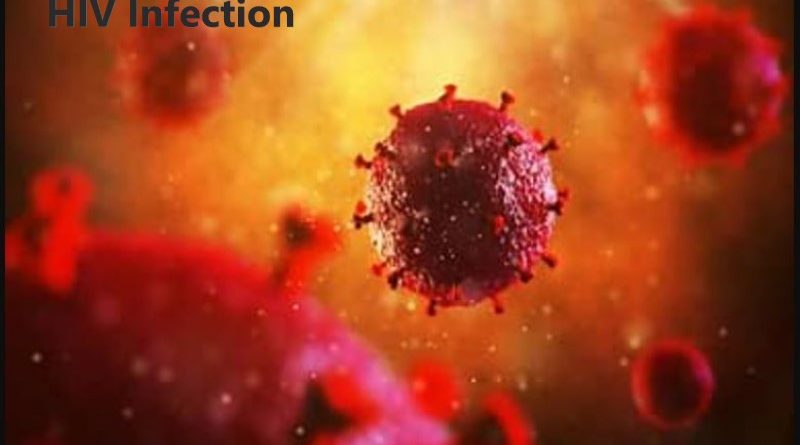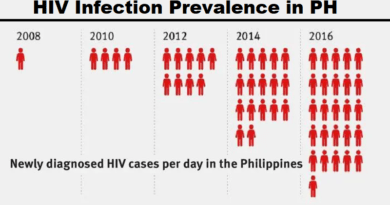Infection with HIV: Global Prevalence, Causes, Symptoms, and Treatment
Infection with HIV caused by human immunodeficiency virus (HIV), that attacks the immune system and can lead to AIDS, (acquired immunodeficiency syndrome). HIV causes a gradual weakening of the immune system, making the infected individual more susceptible to life-threatening infections and cancers.
The most common way to contract HIV is through sexual contact. However, it can also be transmitted from a mother to her child during pregnancy, childbirth, or breastfeeding. Additionally, it can be contracted through the sharing of injection tools, such as needles.
According to the World Health Organization (WHO), there were approximately 38 million people living with HIV globally in 2019. In this article, we will discuss the global prevalence of HIV, the causative virus, how it spreads, diagnosis, symptoms, and treatment options.
Causes of HIV Infection
HIV is caused by the human immunodeficiency virus, which attacks the immune system. See the image to get an idea about its structure.
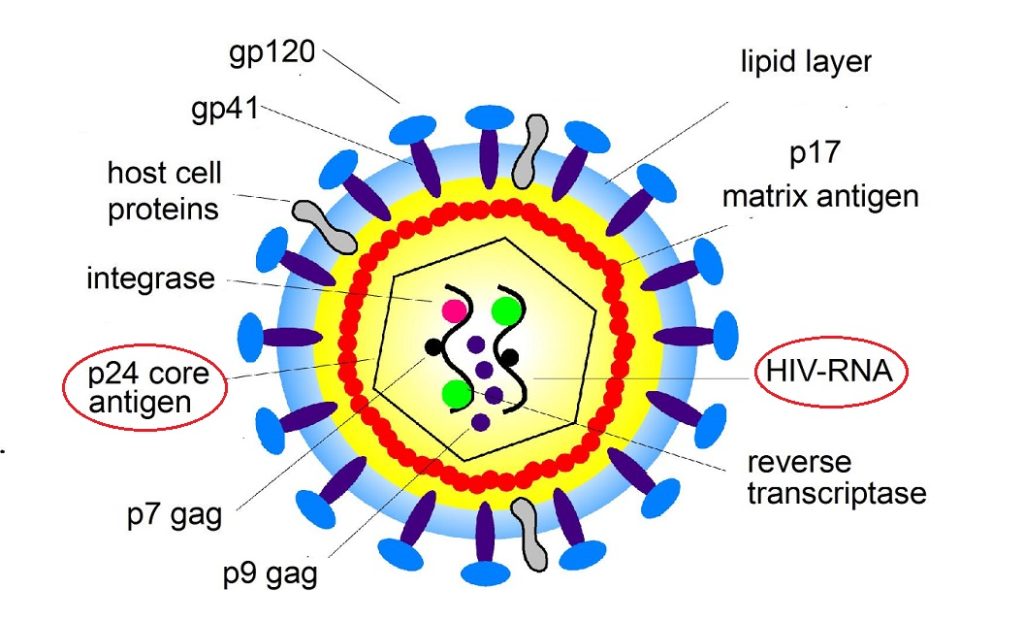
Transmision of HIV
The virus is primarily spread through sexual contact with an infected person, sharing of needles with an infected person, and from mother to child during pregnancy, childbirth, and breastfeeding.
We have to know that people who have HIV acute infection can still infect others, so it’s important to take precautions to prevent transmission, such as using condoms and avoiding sharing needles.
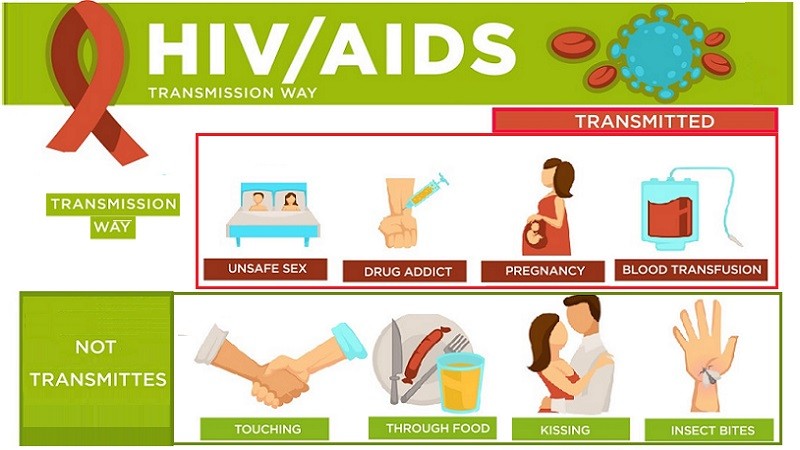
Disease transmitted through unsafe sex, pregnancy, drug addict and blood transfusion.
Touching and food, kissing and insect bites are safe
Global Prevalence
HIV is a global health issue, and the number of people living with HIV varies widely between countries and regions. According to the WHO, sub-Saharan Africa is the most affected region, with nearly 25 million people living with HIV in 2019. Other regions with high HIV prevalence include Eastern Europe, Asia, and Latin America.
- According to UNAIDS, an estimated 38 million people were living with HIV globally at the end of 2019.
- Of these, 1.7 million were children under the age of 15.
- In the same year, 690,000 people died from AIDS-related illnesses.
- Sub-Saharan Africa is the most affected region, with 25.8 million people living with HIV.
- The number of new HIV infections and AIDS-related deaths has been declining globally in recent years due to increased access to antiretroviral therapy and prevention efforts.
Symptoms
HIV can cause a wide range of symptoms, but many people do not experience any symptoms at all during the early stages of infection. Some common symptoms include fever, fatigue, swollen lymph nodes, and a rash. As the virus progresses, it can lead to more severe symptoms such as weight loss, chronic diarrhea, and neurological disorders.
Symptoms of acute HIV infection can include fever, fatigue, sore throat, swollen lymph nodes, rash, and muscle aches. These symptoms may be mistaken for the flu or another viral infection, and some people may not experience any symptoms at all. The symptoms usually appear within 2 to 4 weeks after exposure to the virus, and can last for several weeks to a few months.
During acute infection, the virus is highly contagious and can be easily transmitted to others. This is because the virus is present in large amounts in bodily fluids, such as blood, semen, vaginal fluids, and breastmilk. Additionally, people with acute HIV infection may not yet have detectable levels of HIV antibodies, which means they may test negative for HIV even though they are infected.
The Stages of HIV Infection
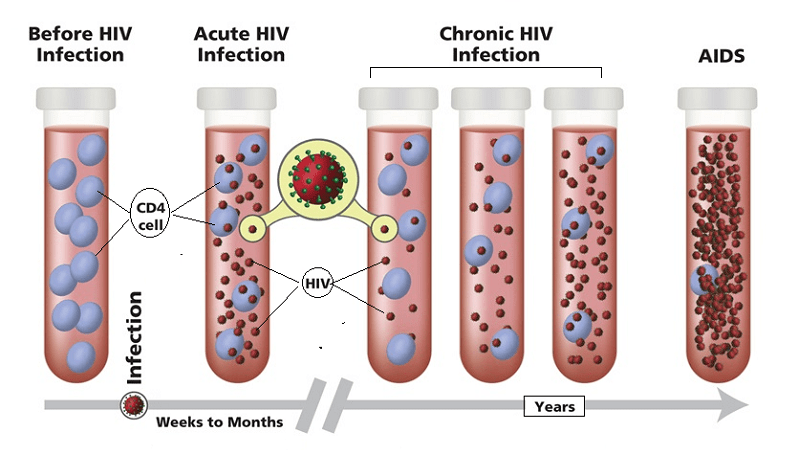
HIV infection is a progressive disease that advances through three stages: acute HIV infection, chronic HIV infection, and acquired immunodeficiency syndrome (AIDS). Without treatment, the virus will continue to weaken the immune system, making the individual more susceptible to other infections and diseases.
Stage 1 (Acute HIV infection)
It is the initial stage of the disease, which occurs shortly after the virus enters the body (after infection). Symptoms of acute HIV infection can include fever, fatigue, sore throat, swollen lymph nodes, rash, and muscle aches. These symptoms may be mistaken for the flu or another viral infection, and some people may not experience any symptoms at all.
Stage 2 (Chronic HIV infection)
Also, it is known as asymptomatic HIV infection or clinical latency, is the second stage of the disease. During this stage, the virus continues to replicate at a lower level, causing damage to the immune system over time. However, most people do not experience symptoms, and the virus can remain undetectable for many years.
Stage 3 (acquired immunodeficiency syndrome – AIDS)
is the most advanced stage of HIV infection. During this stage, the virus has severely damaged the immune system, making the individual more vulnerable to other infections and diseases. Common symptoms of AIDS include weight loss, chronic diarrhea, and neurological disorders.
| Stage | Description | Symptoms |
|---|---|---|
| Acute HIV Infection | First stage of the disease, that occurs shortly after infection. | Fever, fatigue, sore throat, swollen lymph nodes, rash, and muscle aches. |
| Chronic HIV Infection | Second stage, also known as (asymptomatic HIV infection) or (clinical latency). The virus continues to replicate at a lower level, causing damage to the immune system over time. | No symptoms. The virus can remain undetectable for many years. |
| Acquired Immunodeficiency Syndrome (AIDS) | Most advanced stage. The virus has severely damaged the immune system, making the individual more vulnerable to other infections and diseases. | Weight loss, chronic diarrhea, and neurological disorders. |
The good news is that, though there is no cure for HIV, treatment with HIV medicines (called antiretroviral therapy or ART)
can slow or prevent HIV from advancing from one stage to the next.
Diagnosis
HIV can be diagnosed through rapid diagnostic tests, in a medical laboratory, that provide same-day results. This greatly facilitates early diagnosis and start of treatment and care. People can also use HIV self-tests to test themselves at home.
If the test is negative, this means the person is not infected, but the case is different with positive results, no single test can provide a full HIV positive diagnosis. Therefore, confirmatory testing is required, conducted by a qualified and trained health professional. HIV infection can be detected with great accuracy using WHO approved tests.
There 3 test types for diagnosis. HIV can be diagnosed with a blood test that looks for antibodies to the virus. Antibodies are proteins that the body produces to fight off the virus. Another blood test is to detect the viral antigen p24. Also, a test can be done to detect the genetic material of the virus, called RNA test or PCR test, which is also known as the viral load. If the test is positive, a follow-up test will be done to confirm the diagnosis.
Diagnosis of acute HIV infection can be challenging because the symptoms are similar to other viral infections, and the virus may not yet be detectable in standard HIV tests. In addition to that, there are cases where the infected person does experience any symptoms. However, there are specialized tests that can detect the virus few days after exposure to infection, during this early stage, such as the HIV RNA test.
Treatment of infection
If acute HIV infection is not treated, it will progress to the chronic stage, also known as asymptomatic HIV infection or clinical latency, where the virus continues to replicate at a lower level, causing damage to the immune system over time. However, if the infection is detected early, Antiretroviral therapy (ART) can be started during this stage to help prevent the progression of the disease and reduce the risk of transmission.
HIV is a chronic illness that cannot be cured, but it can be managed with antiretroviral therapy (ART). ART is a combination of drugs that work together to slow down the virus’s ability to reproduce. The goal of treatment is to reduce the viral load to undetectable levels, which helps to keep the immune system strong and lower the risk of transmitting the virus to others.
Treatment options for HIV infection include antiretroviral therapy (ART), which is a combination of drugs that work to slow down the virus’s ability to reproduce. The goal of treatment is to reduce the viral load to undetectable levels, which helps to keep the immune system strong and lower the risk of transmitting the virus to others.
There are several different classes of drugs used in ART, each targeting a different stage of the virus’s life cycle. These classes include:
- Nucleoside Reverse Transcriptase Inhibitors (NRTIs) – These drugs block an enzyme called reverse transcriptase, which the virus needs to make copies of itself. Examples of NRTIs include zidovudine (AZT), lamivudine (3TC), and emtricitabine (FTC).
- Non-Nucleoside Reverse Transcriptase Inhibitors (NNRTIs) – These drugs also block reverse transcriptase, but they work differently than NRTIs. Examples of NNRTIs include nevirapine, efavirenz, and etravirine.
- Protease Inhibitors (PIs) – These drugs block an enzyme called protease, which the virus needs to make new copies of itself. Examples of PIs include ritonavir, saquinavir, and darunavir.
- Integrase Inhibitors – These drugs block an enzyme called integrase, which the virus needs to integrate its genetic material into the DNA of the host cell. Examples of Integrase inhibitors include raltegravir and dolutegravir.
- CCR5 Antagonist – These drugs block the CCR5 receptor, a protein that HIV uses to enter cells. Maraviroc is one of the examples for CCR5 antagonist.
- Entry inhibitors – These drugs block the virus’s ability to enter host cells. Examples of entry inhibitors include enfuvirtide and maraviroc.
| Class of Drugs | Examples of Drugs | Mode of Action |
|---|---|---|
| Nucleoside Reverse Transcriptase Inhibitors (NRTIs) | zidovudine (AZT), lamivudine (3TC), emtricitabine (FTC) | block reverse transcriptase |
| Non-Nucleoside Reverse Transcriptase Inhibitors (NNRTIs) | nevirapine, efavirenz, etravirine | block reverse transcriptase |
| Protease Inhibitors (PIs) | ritonavir, saquinavir, darunavir | block protease enzyme |
| Integrase Inhibitors | raltegravir and dolutegravir | block integrase enzyme |
| CCR5 Antagonist | maraviroc | block CCR5 receptor |
| Entry inhibitors | enfuvirtide, maraviroc | block virus’s ability to enter host cells |
Your doctor will work with you to determine the best treatment plan for your individual situation, taking into account factors such as your overall health, the stage of your infection, and any other medical conditions you may have.
It’s important to note that treatment for HIV is a lifelong commitment and it’s important to adhere to the treatment regimen as prescribed by the doctor to avoid resistance. Regular monitoring of viral load and CD4 count is important to assess the treatment’s effectiveness.
It is also important to maintain healthy lifestyle habits, such as eating a balanced diet, getting regular exercise, and managing any other health conditions you may have, to help keep your immune system strong and improve your overall health.
Conclusion
HIV is a serious global health issue that affects millions of people worldwide. Shortly after infection, the person may experience symptoms. This is called Acute HIV infection or early stage of HIV. If treated early and properly the patient can live a healthy and long life. But unfortunately, the HIV cannot be cured.
While there is no cure for HIV, it can be managed with antiretroviral therapy, which can help to keep the virus at undetectable levels and lower the risk of transmitting it to others. It is important for individuals to take steps to protect themselves from HIV and to get tested if they believe they may have been exposed.
SOURCES:
- World Health Organization. (2021). HIV/AIDS. Retrieved from https://www.who.int/news-room/fact-sheets/detail/hiv-aids
- Centers for Disease Control and Prevention. (2021). HIV/AIDS. Retrieved from https://www.cdc.gov/hiv/index.html
- Global HIV/AIDS Overview
- The Stages of HIV Infection | NIH
- The Four Stages of HIV Explained (better2know.co.uk)
- https://www.medicalnewstoday.com/articles/316336
- https://ourworldindata.org/hiv-aids

